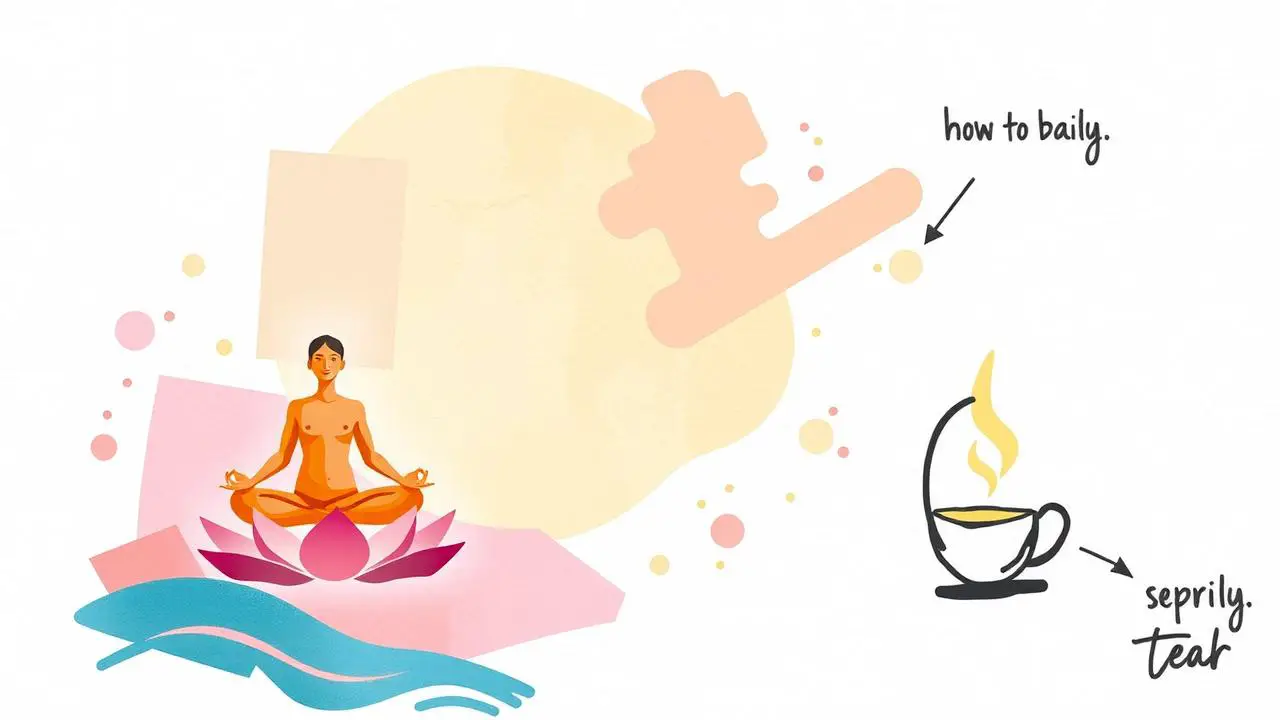Looking for a way to calm your busy mind? You’re in the right place.
Start transforming your life with a simple, yet powerful, daily meditation practice. We’ll guide you through the essentials, from creating a peaceful space to establishing a routine that sticks.
Don’t worry about the hiccups along the way; we’ve got the tools to help you overcome them.
Together, we’ll track your journey, ensuring each mindful moment leads to a more serene you.
Key Takeaways
- Meditation is about becoming aware of thoughts and feelings without judgment.
- Creating a dedicated meditation area in your home can enhance your practice.
- Consistency in your meditation routine is key to training your mind and body to relax.
- Overcoming challenges and tracking your progress mindfully are important aspects of a beginner’s meditation journey.
Understanding Meditation Basics
Every meditation journey begins with grasping the fundamental techniques that’ll anchor your daily practice. It’s crucial to clear up some meditation misconceptions that may have clouded your understanding. Meditation isn’t about silencing your thoughts completely or achieving a state of eternal bliss. Instead, it’s about becoming aware of your thoughts and feelings without judgment.
Mindfulness principles guide you to stay present in the moment, which is at the heart of meditation. You’ll learn to observe your breath, the sensations in your body, and the wanderings of your mind with a gentle curiosity. It’s normal for your thoughts to drift; meditation teaches you to acknowledge this and gently guide your attention back without self-criticism.
Remember, meditation is a skill that improves with practice. Don’t be discouraged if it doesn’t come easily at first. Each time you return your focus, you’re strengthening your mindfulness muscle. Approach your practice with patience and an open heart, and you’ll discover the depth and richness that meditation adds to your life.
Embrace these basics, and watch your daily practice become a wellspring of tranquility and insight.
Crafting Your Meditation Space
Create a dedicated meditation area in your home to establish a physical space that signals your mind it’s time to unwind and focus. For many, this becomes a sanctuary where the worries of the day melt away.
But how do you set up this special zone? Start by selecting essentials that support your meditation practice:
- Comfortable Seating: Find a cushion or chair that allows you to sit with a straight, yet relaxed posture.
- Minimal Distractions: Ensure the space is away from high traffic areas and limit noise and visual clutter.
- Ambient Elements: Introduce items like soft lighting, plants, or a gentle sound machine to enhance the experience.
Personalizing the atmosphere is key. Choose items that resonate with you, whether that’s a particular scent from a candle or incense, or meaningful symbols that inspire inner peace. Remember, this space is a reflection of your inner world; make it a place where you feel at ease and connected.
As you craft this meditative corner, you’re laying the foundation for a powerful practice. With your space set up, you’re ready to explore establishing a meditation routine, the next step in your journey to mindfulness.
Establishing a Meditation Routine
Now that your meditation space is ready, let’s dive into how you’ll weave this practice into your daily life. Establishing a meditation routine is vital to experiencing the full benefits of mindfulness. Think of it as setting the stage for a play—the better the preparation, the more impactful the performance.
Start by choosing a consistent time each day for your practice. Whether it’s the tranquility of dawn or the calm of twilight, pick a time when you’re least likely to be interrupted. Consistency is key; it trains your mind and body to enter a state of relaxation more easily over time.
Mindful breathing is the cornerstone of your routine. It’s the simplest way to anchor yourself in the present moment. Focus on the rhythm of your breath, the rise and fall of your chest, the sensation of air filling your lungs and leaving them. This conscious breathing is a powerful tool to center your thoughts.
Posture perfection isn’t about rigidity; it’s about finding a comfortable position that allows energy to flow freely. Keep your back straight, shoulders relaxed, and hands resting gently in your lap or on your knees. A proper posture supports alertness and enhances your meditation experience.
Overcoming Common Challenges
Even as you settle into your meditation routine, you’ll likely run into a few roadblocks that can disrupt your progress. It’s completely normal to face challenges, and overcoming them is part of the journey to a deeper meditation practice. Remember, every meditator, whether a beginner or seasoned, experiences these hurdles at some point.
- Consistency: Sticking to a daily schedule can be tough with life’s unpredictability. To maintain consistency, set a specific time for meditation and treat it as a non-negotiable appointment with yourself.
- Distraction Management: Your mind will wander—it’s what minds do! When you notice you’re getting distracted, gently bring your focus back to mindful breathing. This simple act is at the heart of meditation and strengthens your attention muscle over time.
- Expectations: Let go of the idea that meditation should feel a certain way or yield immediate results. Approach each session with curiosity rather than judgment.
As you continue, you’ll find that these challenges lessen. You’ll get better at recognizing when your attention has drifted and you’ll return to mindful breathing with more ease. Your ability to manage distractions will improve, and the habit will become a cherished part of your day. Keep going, you’re doing great.
Tracking Your Progress Mindfully
As you establish your meditation practice, it’s crucial to mindfully observe your progress without becoming overly attached to quantifiable outcomes. Meditation journaling can be a reflective tool that allows you to note the nuances of your journey.
This isn’t about hitting targets but recognizing patterns and shifts in your mental landscape.
Begin by setting aside a few minutes after each session to jot down thoughts and feelings. Did you encounter distractions? How did you refocus? Some days you’ll notice small victories, your mindful milestones – perhaps a moment of profound stillness or a flash of insight. These deserve a gentle acknowledgment.
Yet, remember, this practice isn’t a race. If you find yourself frustrated or stuck, that’s okay. Your journal can be a safe space to express these challenges without judgment. It’s about the process, not just the progress.
Be patient and kind to yourself as you review your entries over time. You’ll likely discover patterns that point to deeper learning and growth. This mindful tracking is less about checking boxes and more about weaving a tapestry of awareness that will enrich your meditation practice and daily life.
How Can Beginners Establish a Daily Meditation Habit?
Beginners can establish daily meditation routines for newbies by starting with just a few minutes each day and gradually increasing the duration. Creating a dedicated space for meditation can help to make it a regular habit. Using guided meditation apps or videos can also provide support and structure for newcomers.
FInal Thoughts
Now you’re the captain of your inner voyage, charting through the tranquil seas of meditation. You’ve set the stage, anchored a routine, and braved the squalls of distraction.
Remember, each breath is a step on the path to serenity. Track your journey with gentle reflection, not rigid scrutiny. Embrace this practice; let it be your lighthouse, guiding you to shores of peace.
Keep sailing forth, and watch as your daily meditation habits become lighthouses in life’s storms.




